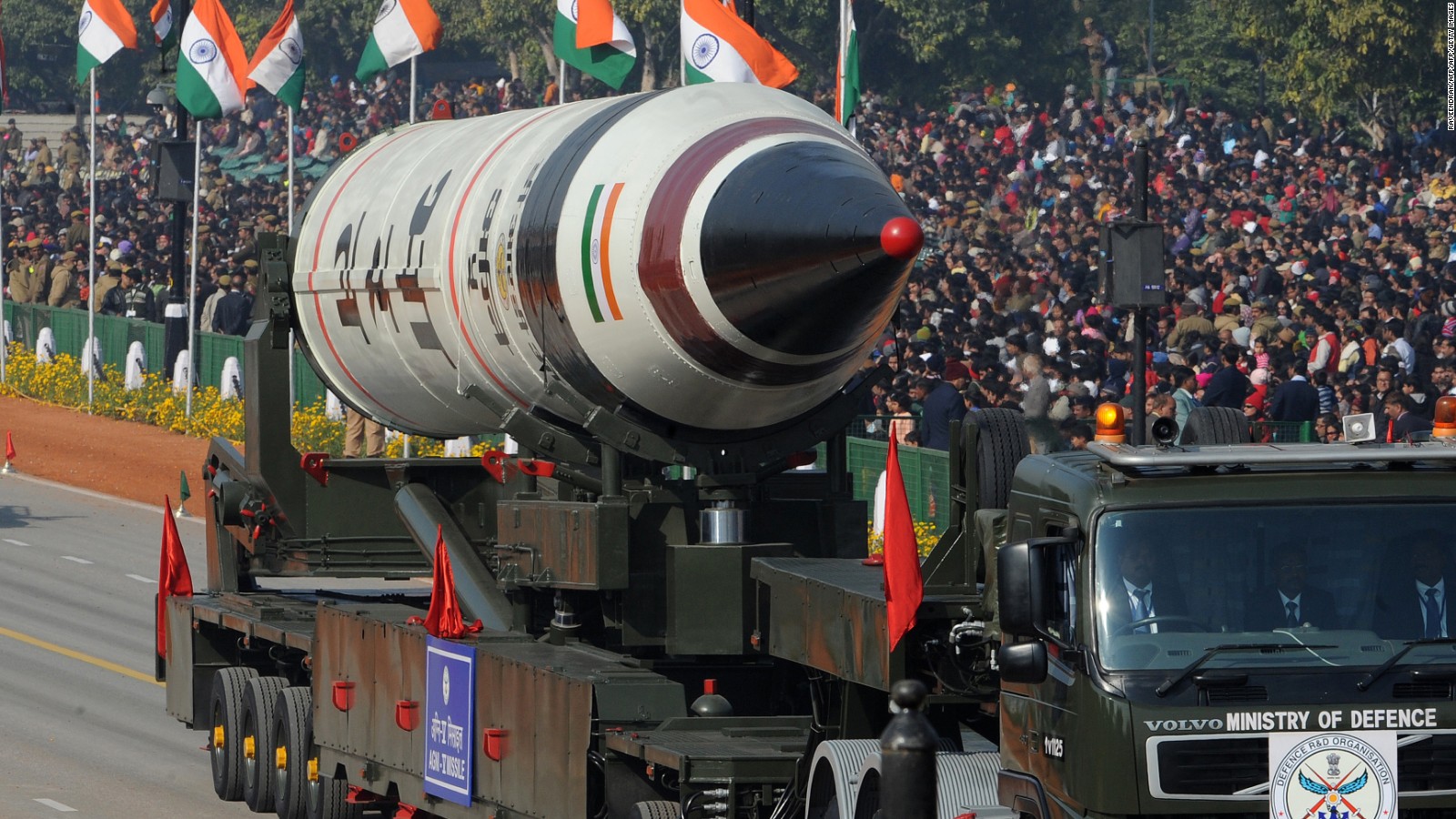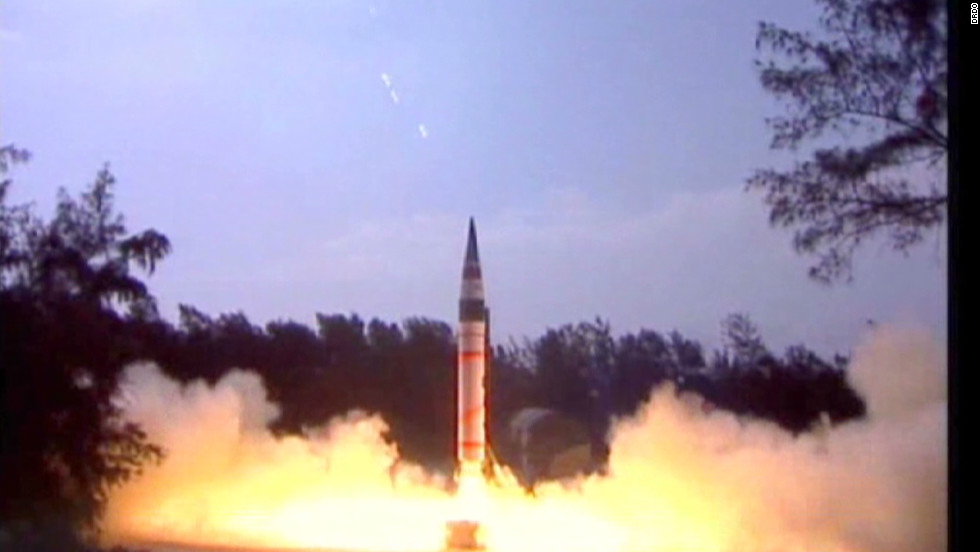The reason for this would be that the most likely countries on earth to have a nuclear war would likely be India and Pakistan. So, putting your nukes on ICBMs would tend to stop such a war because then the nukes come from space at high altitude. Because of the fake news regarding Israel that almost started a nuclear war between ISrael and Pakistan, India is now preparing for the worst caused by more fake news.
begin quote from:
New
Delhi (CNN)India successfully tested its most powerful nuclear-capable
missile on Monday, according to the country's Defense Research and
Development Organization (DRDO) and Defense Ministry. The Defense
Ministry …
India tests nuclear-capable ICBM

The Agni-V missile is displayed during India's Republic Day parade in New Delhi on January 26, 2013.
Story highlights
- It's the fifth successful launch of the Agni-V
- The missile has a range of more than 5,000 kilometers
New Delhi (CNN)India
successfully tested its most powerful nuclear-capable missile on
Monday, according to the country's Defense Research and Development
Organization (DRDO) and Defense Ministry.
The
Defense Ministry said the test showed the increasing strength of the
country's homemade missiles and will help as a deterrent.
"Successful
test firing of Agni V makes every Indian very proud. It will add
tremendous strength to our strategic defence," Indian Prime Minister
Narendra Modi said on Twitter.
This was the fourth successful test of the Agni-V surface-to-surface Intercontinental Ballistic Missile (ICBM).
The first one was launched in 2012.
Monday's
missile was fired from a canister on mobile launcher -- features that
help protect the missile and allows for quick deployment and firing -- from an island off the coast of the eastern Indian state of Odisha.
Proliferation worries
The
launch comes at a time when global concerns about nuclear proliferation
have been on the rise, specifically with the election of Donald Trump
as the next US President and recent comments by Russian President
Vladimir Putin.
Putin said last week that he would seek to enhance his country's nuclear capabilities.
Trump
responded on Twitter, saying "the United States must greatly
strengthen and expand its nuclear capability until such time as the
world comes to its senses regarding nukes," Trump wrote.
The two countries have more than 14,000 nuclear warheads between them.
India has somewhere between 100 to 120 nuclear warheads, according to the Federation of American Scientists -- more than North Korea, but less than China and a similar amount as Pakistan.
Specifically,
the development is likely most worrying for China -- with a range of
more than 5,000 kilometers (more than 3,100 miles) the Agni-V is India's
longest-range and puts Beijing within striking distance.
Pakistan,
India's historical adversary, was already in range before the Agni-V,
according to IHS Jane's, a military analysis company.
Before
the Agni-V and its predecessor, India's longest-range missile could
barely reach mainland China, says Ajai Shukla, a former Indian army
colonel and a columnist at India's Business Standard.
Shukla
says the new missiles -- which are expected to be put into service in
2017, according to Jane's -- will be "the backbone of India's
China-specific nuclear deterrent."
"In
restructuring the nuclear order, many Indian analysts believe the
Agni-V may induce a more stable relationship with Beijing, although for a
truly effective deterrent, they believe that India will have to further
develop both its conventional armed forces and possibly a second-strike
capability," Jane's says.
Nuclear war between the two is unlikely -- both maintain nuclear doctrines that mandate "No First Use" -- says Shukla.


No comments:
Post a Comment